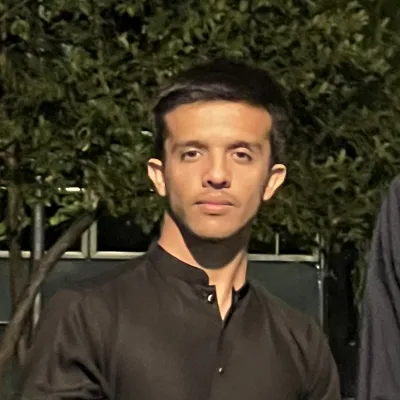FLUX Pixel Art Characters | LoRA Training Guide
Updated on
FLUX Pixel Art Characters | LoRA
Task: Text-to-Image (Pixel Art Characters)
Base: black-forest-labs/FLUX.1-dev • Adapter: LoRA (attention layers)
Hardware: Trained on NVIDIA A100
Updated: 2025-08-26
This LoRA adapts FLUX to generate retro pixel-art characters with clean silhouettes and limited palettes ideal for game assets, avatars, character sheets, and concept art.
Keep prompts short and style-focused (see tips below).
License: CC BY-NC 4.0 (non-commercial).
Examples
| Prompt | Output |
|---|---|
pixel art character, red hair, gray armor, no weapon, facing forward | |
pixel art character, red hair, brown armor, no weapon, facing forward | |
pixel art character, brown hair, blue clothing, no weapon, facing forward |
Quickstart (Diffusers)
import torch
from diffusers import FluxPipeline
pipe = FluxPipeline.from_pretrained(
"black-forest-labs/FLUX.1-dev",
torch_dtype=torch.float16
).to("cuda")
# Load the LoRA adapter
pipe.load_lora_weights("milliyin/pixel_art_characters_lora_flux_nf4")
NEGATIVE_PROMPT = "blurry, low quality, distorted, ugly"
HEIGHT = 512
WIDTH = 512
GUIDANCE_SCALE = 7.5
NUM_INFERENCE_STEPS = 50
prompt = "pixel art, rpg adventurer, green cloak, clean outline, limited palette, facing forward"
image = pipe(
prompt=prompt,
negative_prompt=NEGATIVE_PROMPT,
height=HEIGHT,
width=WIDTH,
guidance_scale=GUIDANCE_SCALE,
num_inference_steps=NUM_INFERENCE_STEPS,
).images[0]
image.save("sample.png")
Prompting Tips
- Use compact prompts:
pixel art, [role/class], [palette cue], facing forward - Add presentation cues:
clean outline,limited palette,8-bit,sprite sheet style - Negative prompt: remove blur/noise and photographic artifacts.
Non-Technical Overview
- What this is: A small add-on (“LoRA”) that teaches FLUX how to draw characters in pixel-art style.
- Why LoRA: Instead of retraining the whole model, LoRA learns just the style; it’s faster, cheaper, and easy to share.
- What you need: The base FLUX model + this LoRA + a short prompt.
- Who it’s for: Indie devs, artists, prototypers who want consistent pixel characters quickly.
Technical Details (Training)
Data Pipeline
- Dataset:
haidarazmi/lora-pixel-art-characters-datases(HF Datasets). - Resolution: 512×512 (resize → random crop).
- Conditioning: Pre-computed text embeddings (per-image) were loaded from a Parquet file and aligned by image hash.
- Batching:
train_batch_size = 1, gradient accumulation to achieve an effective batch >1 without OOM.
Model & Adapters
- Base:
black-forest-labs/FLUX.1-dev(Flow-matching diffusion). - Trainables: LoRA adapters inserted into Transformer attention (
to_q,to_k,to_v,to_out.0). - Rank:
r = 4(compact, faster to train/serve). - Quantization: NF4 (bitsandbytes) to reduce VRAM while training attention blocks.
Objective & Scheduler
- Noise schedule:
FlowMatchEulerDiscreteScheduler. - Loss: Weighted MSE on velocity target (
noise - latents). - Guidance: Conditioning via pooled/text embeddings.
Optimizer & Precision
- Optimizer:
AdamW8bit(bitsandbytes). - LR:
1e-4constant schedule. - Precision: FP16 mixed precision; gradients clipped to 1.0.
Latent Caching
- Encoded latents are pre-cached with the VAE once (then VAE is freed) to minimize compute during training.
Key Hyperparameters (repro)
width=512, height=512
rank=4
learning_rate=1e-4
train_batch_size=1
gradient_accumulation_steps=4
max_train_steps=700
mixed_precision=fp16
checkpointing_steps=100
guidance_scale=1.0
device=NVIDIA A100
Evaluation & Results
- Goal: stylistic consistency across characters, clean silhouettes, readable armor/clothing at 1× zoom.
- Qualitative: prompts constrained to ~5–15 tokens produce stable sprite-like characters; long prompts trend toward full-frame art.
- Failure cases: Over-detailed prompts may yield non-pixel textures; very high guidance can produce aliasing artifacts.
Limitations & Safety
- Style is tuned for single characters, mostly front-facing.
- May mimic dataset biases (pose, attire, palettes).
- Non-commercial use only under CC BY-NC 4.0.
Plain-English Walkthrough
- Start from FLUX (a powerful image model).
- Add a small “style brain” (LoRA) that learns pixel-art rules.
- Feed the model many pixel-art characters and tell it what each image represents.
- The LoRA learns how to draw characters like the examples.
- Later, you load FLUX + LoRA and write a short prompt the model outputs a new pixel character.
Citation
@software{milliyin_flux_pixelart_lora_2025,
title = {FLUX Pixel Art Characters LoRA},
author = {Milliyin},
year = {2025},
note = {LoRA adapter for FLUX.1-dev tuned for pixel art characters},
url = {https://huggingface.co/milliyin/pixel_art_characters_lora_flux_nf4}
}
